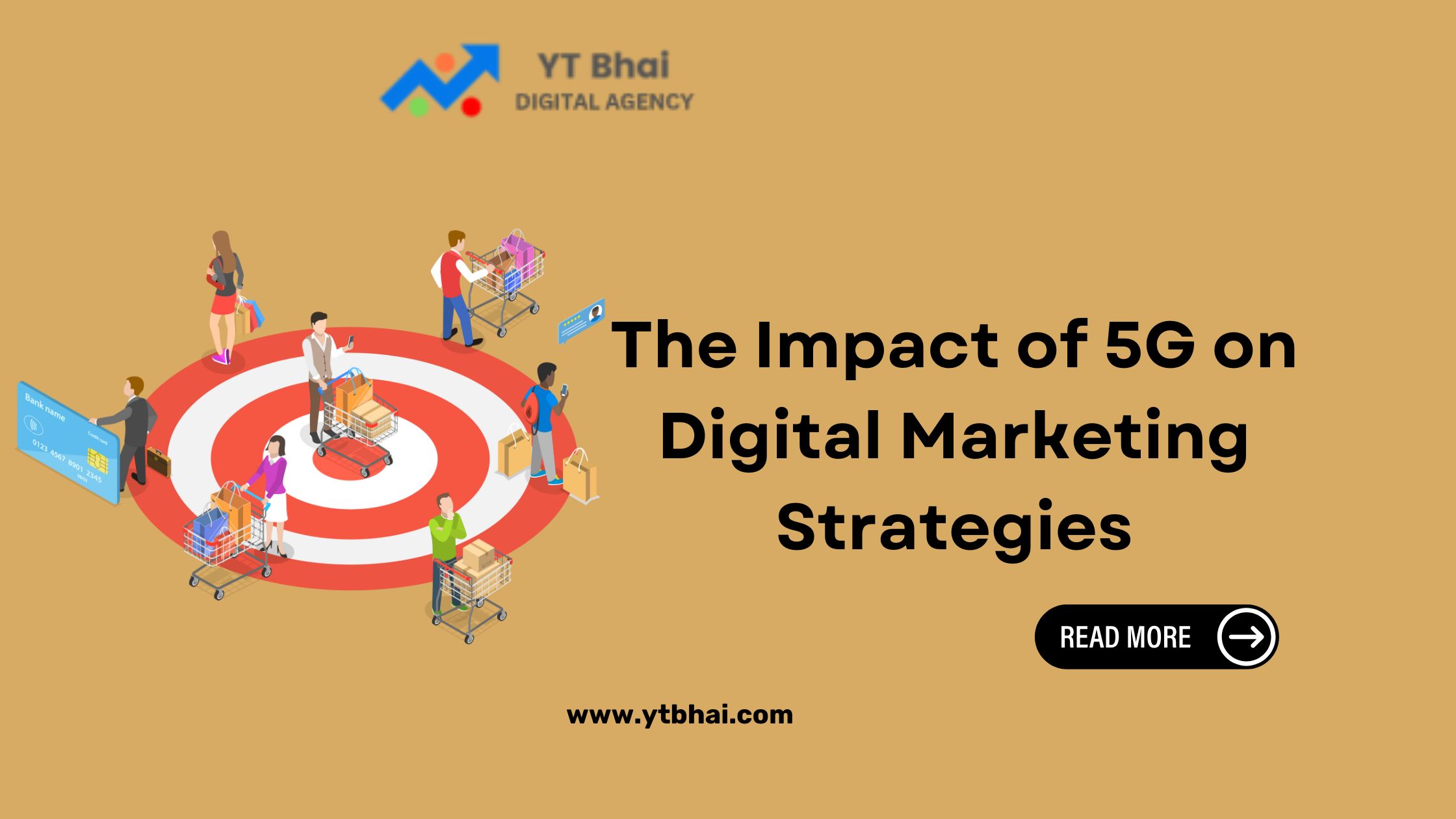
The advent of 5G technology marks a transformative era in digital connectivity. With lightning-fast speeds, ultra-low latency, and unparalleled connectivity, 5G is set to revolutionize industries, and digital marketing is no exception. As businesses and marketers look for innovative ways to connect with audiences, 5G opens new possibilities for richer, more immersive customer experiences. This article explores the profound impact of 5G on digital marketing strategies and what businesses need to adapt to thrive in this era.
What is 5G Technology?
5G, or the fifth generation of wireless technology, offers faster data speeds, improved reliability, and lower latency compared to its predecessors. It enables seamless communication between devices, making technologies like IoT, AR, and VR more accessible to marketers.
Key Features of 5G Relevant to Digital Marketing
| Feature | Impact on Digital Marketing |
|---|---|
| High-Speed Data | Faster content delivery, improving user experience. |
| Low Latency | Enhanced real-time interactions, perfect for live streaming. |
| Massive Connectivity | Supports more devices, improving reach and audience targeting. |
| Energy Efficiency | Enables cost-effective campaigns on IoT devices. |
The Impact of 5G on Digital Marketing Strategies
1. Enhanced Mobile Marketing
With 5G’s high-speed connectivity, mobile users can download content, stream videos, and interact with ads without delays. Marketers can leverage:
- Dynamic Ads: Enhanced visuals and interactivity in real-time.
- Video Marketing: Buffer-free streaming increases engagement rates.
- Mobile AR/VR: Richer experiences for product trials and virtual tours.
2. Improved Personalization
5G facilitates data collection and real-time analytics on a massive scale. This allows marketers to:
- Deliver hyper-personalized content based on user preferences.
- Leverage geolocation for localized marketing campaigns.
- Use AI-driven insights for better targeting and retargeting strategies.
3. Interactive Content
5G supports immersive technologies like AR, VR, and 360-degree videos. Digital marketing strategies can now include:
- Virtual Try-Ons: For e-commerce platforms to allow customers to visualize products.
- Immersive Storytelling: Brands can create captivating narratives through VR experiences.
- Gamification: Interactive games embedded in marketing campaigns.
5G and the Evolution of Advertising Formats
1. Video Ads and Live Streaming
5G enhances video resolution and eliminates buffering, making video ads more engaging. Brands can:
- Broadcast high-definition live events.
- Deliver tailored video ads to users in real-time.
2. Programmatic Advertising
Faster connections and more devices mean better automation in ad delivery. Programmatic advertising becomes:
- Smarter with AI-driven optimization.
- More effective with instantaneous bidding for impressions.
3. Wearable and IoT Advertising
5G-powered IoT devices like smartwatches and home assistants enable:
- Contextual ads triggered by real-world scenarios.
- Voice-based searches leading to personalized ad placements.
Challenges of Implementing 5G in Digital Marketing
Despite its advantages, 5G comes with challenges:
- Cost of Implementation: Upgrading infrastructure to support 5G is expensive.
- Privacy Concerns: The massive data collection raises ethical issues around user privacy.
- Global Disparities: Not all regions have access to 5G, limiting its universal applicability.
Preparing Your Digital Marketing Strategy for 5G
1. Invest in Video and AR/VR Content
Create engaging content optimized for 5G’s capabilities. This includes high-quality video, immersive experiences, and interactive formats.
2. Leverage AI and Analytics
Use AI to analyze real-time data for personalized marketing strategies. This ensures that you deliver the right message to the right audience at the right time.
3. Optimize for IoT Devices
Adapt your content and ads for smart devices, ensuring compatibility and relevance across multiple platforms.
Future Trends in 5G and Digital Marketing
- Smart Cities: Hyper-targeted marketing in urban areas with IoT integration.
- Cloud Gaming Ads: Engaging gamers directly through 5G-supported platforms.
- Holographic Displays: The future of experiential marketing with 3D visuals.
Conclusion
5G technology is more than just an upgrade in speed; it’s a gateway to innovation in digital marketing. By enabling richer, more interactive content and providing unprecedented access to real-time data, 5G empowers marketers to deliver unparalleled customer experiences. To stay ahead, businesses must adapt their strategies to fully leverage the potential of this groundbreaking technology.
FAQs
1. How does 5G impact digital marketing?
5G enhances digital marketing by enabling faster content delivery, real-time interactions, and immersive experiences like AR/VR.
2. What industries will benefit most from 5G in marketing?
Industries like e-commerce, entertainment, healthcare, and real estate can leverage 5G for enhanced marketing strategies.
3. What are the challenges of using 5G in marketing?
High costs, privacy concerns, and unequal global access are some challenges in leveraging 5G for marketing.
4. How can businesses prepare for 5G in marketing?
Invest in AR/VR content, optimize for IoT devices, and use AI-driven analytics to enhance customer engagement.
5. Will 5G replace traditional digital marketing methods?
No, 5G will complement existing strategies by offering advanced tools and better connectivity for marketers.
Why YT Bhai
Starting and scaling a digital marketing agency is a rewarding journey that requires dedication, skill, and strategic planning. At YT Bhai, we understand the challenges and opportunities in this dynamic industry. As a complete digital marketing service agency, we provide all the tools and support you need to succeed. Whether you’re just starting out or looking to take your agency to the next level, we’re here to help you every step of the way.
For more information, visit YT Bhai or explore our services at YT Bhai.

Sushma
July 17, 2024Very Nice Service